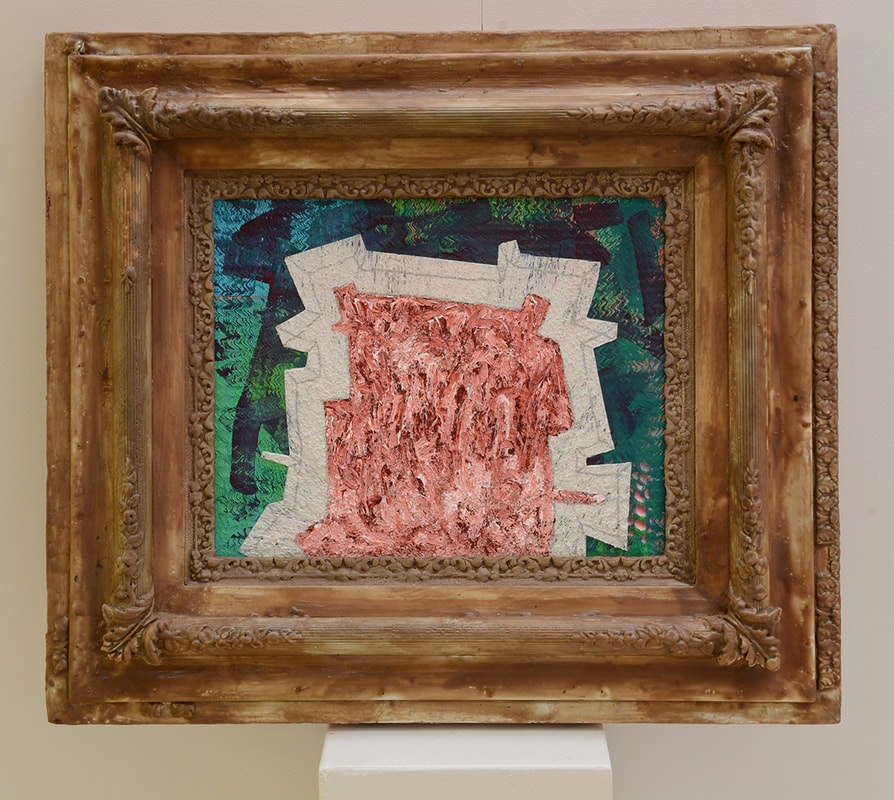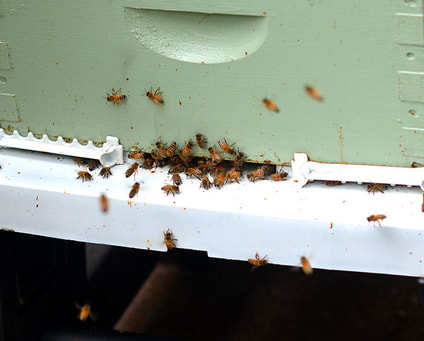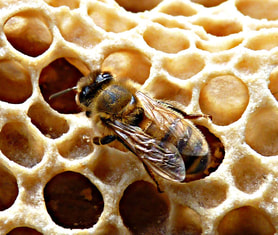|
I was excited when I first purchased the antique frame used in this piece. I soon realized that the frame was very fragile and would easily break apart. Parts kept falling off and I felt bad that I couldn't preserve its integrity. My first job came to mind. As a four year old I worked with my father in his apiary. One of my jobs was to scrape the propolis, a strong glue-like substance that bees use, off of old hives. While I didn't have propolis on hand, I did have some industrial grade bees wax, with which I decided to encase the frame. The result was a more stable, leathery looking surface with a rich, earthy aroma. I started to associate my actions on the painting and within the frame with the industry of worker bees. Just as the bees would venture into the world to collect nectar and vomit it into comb cells to create honey, I would venture out in the world, engaging in the activities of life, and deposit my experience into a wax cell to create an image. I envision the center of the image as hot and active, buzzing with life. The white border is the hive wall and the green area is the space outside the hive. The white area acts like a gateway leading to interior warmth. It reduces the natural entrance to the painting, the frame, to a smaller passage. The action of this gate-like structure conjured memories of a beekeeper's device known as an entrance reducer. Entrance reducers restrict the size of the hive entrance thereby affording bees with a more strategic space to defend. References:
https://www.beesmartdesigns.com/img/products/bottom-board/grid-3.jpg http://www.prbka.co.uk/wp-content/uploads/2012/02/worker-on-comb-Photo-P-Perry-2010.jpg
0 Comments
Leave a Reply. |
Archives
July 2023
Categories |



 RSS Feed
RSS Feed